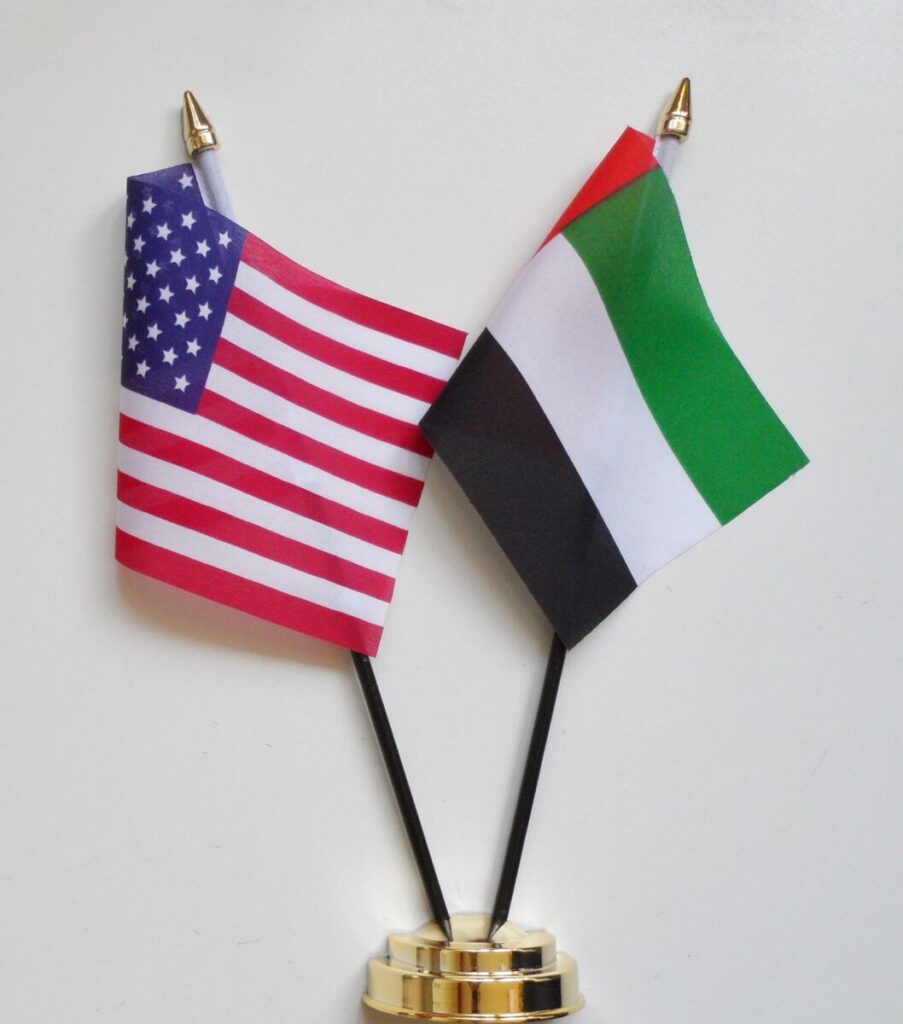The United States and the United Arab Emirates (UAE) are two nations that, while distinct in many ways, share a commitment to progress and global influence. This blog delves into their cultural, economic, and social landscapes, highlighting both the differences and similarities that define these two nations.

Cultural Landscape
Diversity and Heritage
The United States is often referred to as a “melting pot,” where cultures from around the globe converge. This rich tapestry is woven from various ethnic backgrounds, languages, and traditions. The U.S. celebrates a wide array of holidays, including Thanksgiving, Independence Day, and various cultural festivals reflecting its immigrant roots. Cities like New York, Los Angeles, and Chicago are hubs of cultural exchange, offering a plethora of museums, theaters, and restaurants that represent global cuisines.
In contrast, the UAE is a blend of ancient traditions and modernity. Comprising seven emirates, the UAE has a predominantly Arab culture that is steeped in Islamic traditions. However, due to its position as a global trade hub, the UAE has also welcomed a significant expatriate population, which has enriched its cultural landscape. Events such as the Dubai Shopping Festival and Abu Dhabi Film Festival showcase this blend of local and international influences.
Language and Communication
English is the primary language of communication in the U.S., used in business, education, and daily life. This linguistic unity fosters a sense of commonality among Americans, despite regional dialects and variations. In the UAE, Arabic is the official language, but English is widely spoken, particularly in business and tourism sectors. The bilingual nature of the UAE reflects its diverse population and global connections.
Religious Influences
Religion plays a significant role in both countries, though in different ways. The U.S. is characterized by a plurality of religions, with Christianity being the most prevalent. The country prides itself on the separation of church and state, allowing for a diverse expression of beliefs.
The UAE, however, is an Islamic state where Islamic law significantly influences its legal system and daily life. Ramadan, Eid al-Fitr, and Eid al-Adha are important observances, with a profound impact on societal norms. The coexistence of various religions, including Hinduism, Christianity, and Buddhism, is also evident, particularly in urban areas.
Economic Landscape
Economic Structure
The U.S. boasts the largest economy in the world, characterized by a diverse range of industries, including technology, finance, healthcare, and agriculture. Silicon Valley stands as a global innovation center, driving advancements in technology and entrepreneurship. The U.S. economy is marked by its consumer-driven nature, with a strong emphasis on innovation and competition.
In contrast, the UAE has rapidly evolved from an oil-dependent economy to a more diversified one. While oil still plays a crucial role, sectors such as tourism, aviation, real estate, and finance have become significant contributors to its GDP. Cities like Dubai and Abu Dhabi are recognized for their modern infrastructure and business-friendly environments, attracting investors and entrepreneurs worldwide.
Global Trade and Investment
The U.S. has long been a leader in global trade, with numerous trade agreements that enhance its economic ties with countries around the world. It is a key player in organizations such as the World Trade Organization (WTO) and maintains strong economic relationships with nations across Europe, Asia, and the Americas.
The UAE has positioned itself as a vital trade hub in the Middle East, leveraging its strategic location between Europe, Asia, and Africa. Free trade zones, low taxation, and state-of-the-art logistics facilities have made the UAE an attractive destination for international businesses. The country’s Vision 2021 initiative aims to further diversify the economy and strengthen its global competitiveness.
Social Dynamics
Quality of Life
In terms of quality of life, both countries offer unique advantages. The U.S. is known for its high standard of living, access to education, and healthcare, although disparities exist across different regions. Cities like San Francisco and Boston are celebrated for their vibrant cultural scenes and economic opportunities.
The UAE, particularly cities like Dubai and Abu Dhabi, offers a luxurious lifestyle, characterized by modern amenities, safety, and a low crime rate. However, the rapid pace of development has also led to challenges, such as high living costs and a reliance on expatriate labor.
Education and Innovation
The U.S. is home to some of the world’s most prestigious universities and research institutions, attracting students and scholars globally. Its emphasis on higher education and research fosters a culture of innovation and entrepreneurship.
The UAE is also investing heavily in education, with initiatives to enhance its educational infrastructure and promote STEM (Science, Technology, Engineering, and Mathematics) fields. The establishment of institutions like the Mohammed bin Rashid Academy of Science and the UAE University reflects the nation’s commitment to building a knowledge-based economy.
In summary, the United States and the UAE present a fascinating study in contrasts and similarities. While the U.S. thrives on its cultural diversity and economic prowess, the UAE stands out for its rapid development and strategic global positioning. Both nations continue to evolve, shaping their identities and futures in an increasingly interconnected world. Understanding these differences and similarities can foster better cultural appreciation and economic collaboration between these two influential countries.



Pingback: India-US climate change mitigation to help create well-paying green jobs, says US diplomat Jorgan Andrews - View Hub